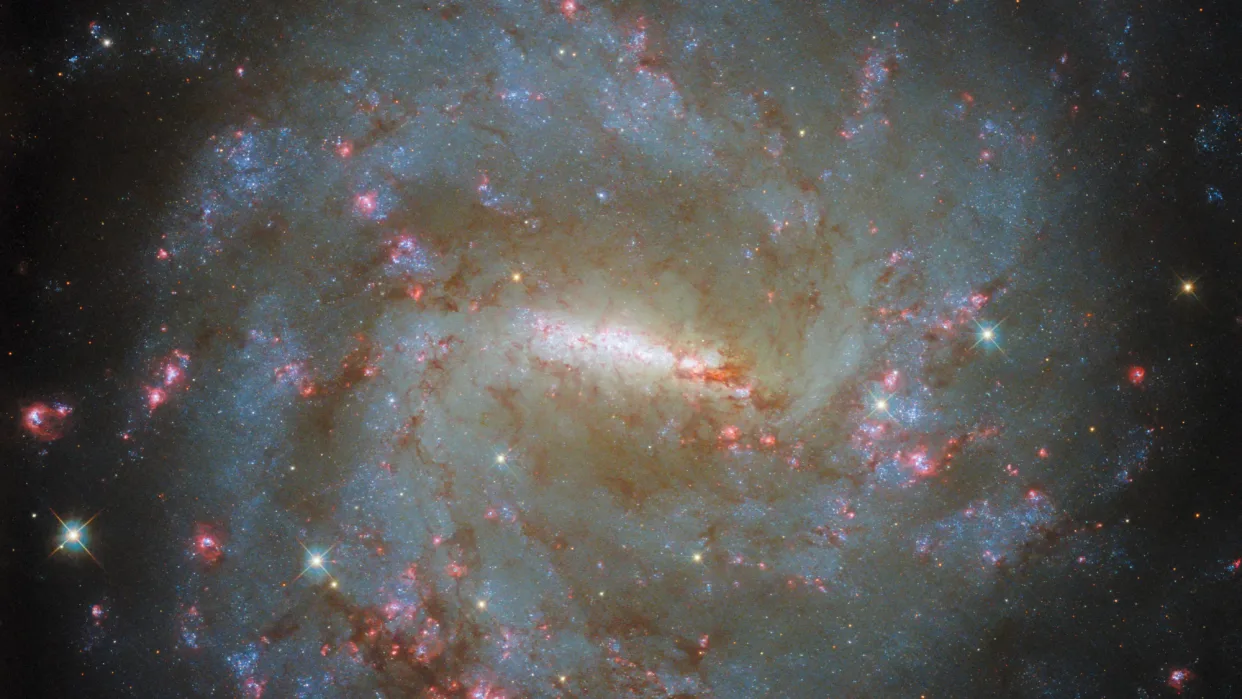The aging yet resilient Hubble Space Telescope has once again transmitted an awe-inspiring image of a distant galaxy.
The most recent capture by Hubble showcases the barred spiral galaxy NGC 3059, situated approximately 57 million light-years away from Earth. This photograph, released on June 7, was taken in May as part of a broader galactic study, employing Hubble’s Wide Field Camera 3 instrument, as stated by NASA.
To conduct its observations, the space telescope utilizes various filters, each permitting specific wavelengths of light to reach its instruments. The recent view of NGC 3059 combines data from both narrow and wide-band filters, resulting in the revelation of pinkish star-forming regions within the galaxy, alongside bluish patches housing other stellar populations.
According to NASA officials, “Narrow-band filters hold immense scientific value as they selectively filter particular wavelengths of light associated with specific physical and chemical processes.”
According to the statement, astronomers have found that hydrogen atoms can emit red light with a wavelength of 656.46 nanometers, known as H-alpha emission or the “H-alpha line,” under certain conditions. This emission is particularly valuable to astronomers because it provides insights into specific physical processes and conditions, often indicating the presence of newly forming stars.
To observe H-alpha emissions, astronomers utilize narrow-band filters, which allow for the isolation of this specific wavelength. In contrast, wide-band filters capture a broader range of wavelengths, enabling astronomers to study different sections of the electromagnetic spectrum. By combining data from multiple filters, scientists can create detailed images of celestial objects such as NGC 3059, even from distant locations across the universe.
